
Estonia - The companies Elektriraudtee and Elron - passenger traffic in Estonia
For a full scale picture, please click on the picture shown !
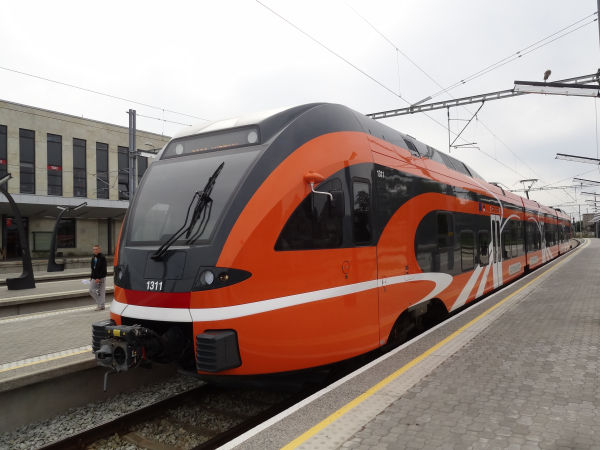
Year 2013 was the year of big changes in Estonian rail traffic. Due to financial aid from the European Union Estonia could finally
get rid of its Soviet era passenger traffic trains. In the old days after regained independence until 2013, the company Elektriraudtee
(Electric railways) took care of the suburban electric multiple unit trains around the capital city Tallinn and another privatised company
Edelaraudtee (Southern railways) operated all longer routes in the country. But as the state financed all new trains, they decided to give
Elektriraudtee the operation of all of them. Elektriraudtee also got a new name as a company and is now called Elron.
This is one of the brand new Stadler FLIRT trains. Here is one of the three coach EMU variants at Tallinn Balti jaam (Baltic railways)
station. Here the taping by the side of the train still says "Elektriraudtee", but they were soon changed to "Elron". Picture of the
FLIRT no. 1311 at Balti jaam, Tallinn 21.8.2013 by Ilkka Siissalo.
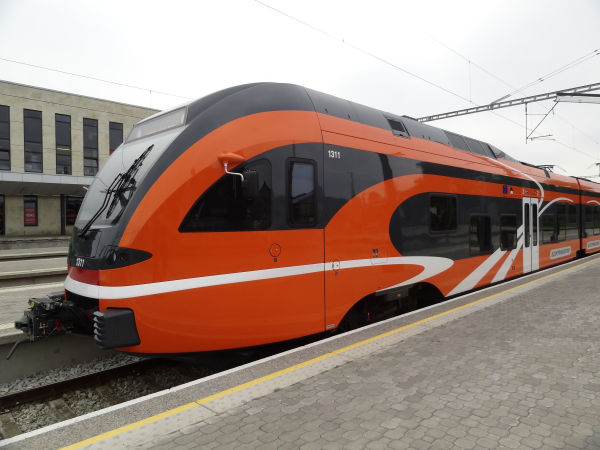
A closeup of the front of the Estonian electric FLIRT. These trains were manufactured by the Swiss company Stadler and in many respects
they are similar to the FLIRT trains used in the suburban traffic of Helsinki, Finland. The trains of Helsinki are a bit older, but they
also are of broad gauge. Note the small EU flag by the door, annotating that a major part of the cost of the train was paid by the European
Union. Picture at Tallinn Balti jaam 21.8.2013 by Ilkka Siissalo.
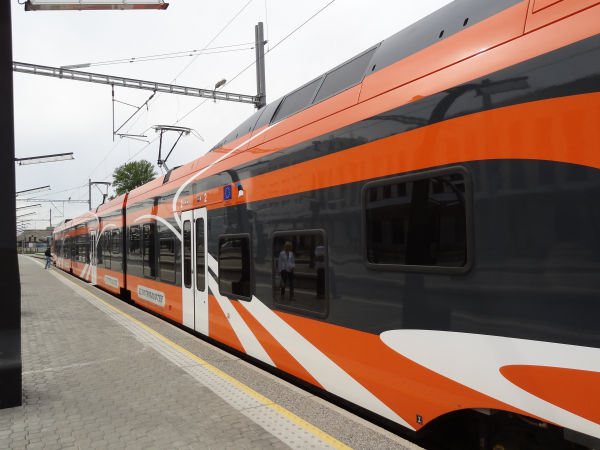
A third picture of the electric three coach FLIRT 1311. In 2013 the comfort and quality of these Swiss trains in Tallinn was something
never before seen. Picture at Tallinn Balti jaam 21.8.2013 by Ilkka Siissalo.
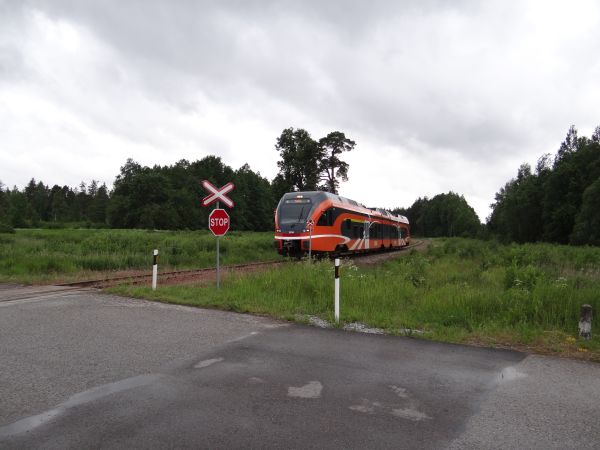
A two wagon diesel FLIRT has just left Pärnu station and is here approaching Pärnu Kauba station on its way to Tallinn. Picture 24.6.2015 by
Ilkka Siissalo.
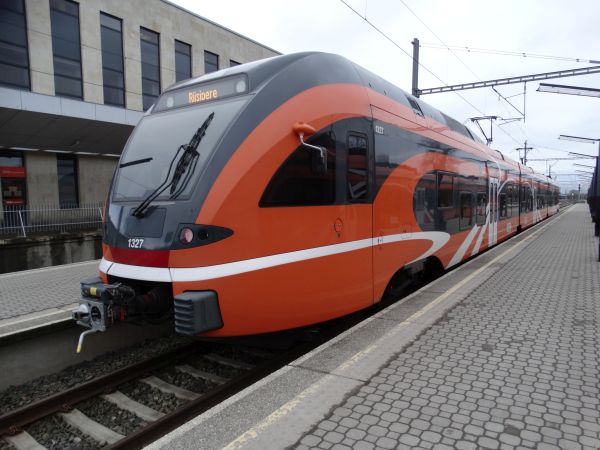
Elron Flirt train no. 1327 at Tallinn Balti Jaam station. The logic of the train numbering is that first digit 1=electric train,
2=diesel train. 2. digit shows the number of coaches in the train. So this one is an electric three-coach Flirt - as can be seen from
the picture too. Picture 31.3.2017 by Ilkka Siissalo.
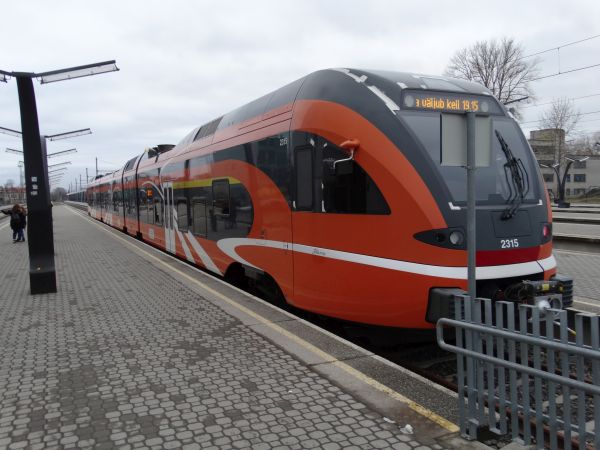
Elron Flirt train no. 2315, a three coach diesel variant. Note the small diesel engine module between coaches 1 and 2.
Picture 31.3.2017 by Ilkka Siissalo.
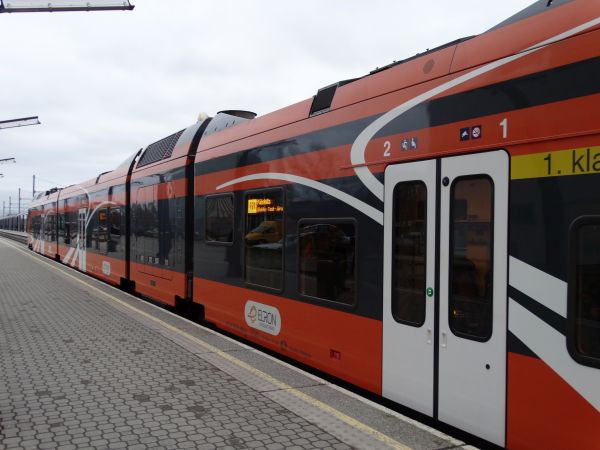
The diesel engines in a diesel Flirt are located in a small "power pack" module, a small extra coach in the middle of the train.
If this would be a Stadler GTW train, there would be a powered bogie under the diesel power pack coach. But in the case of a Stadler
Flirt train, even the power pack car rests on Jacobs' style bogies. The diesels create electric power and electric axle motors are
distributed along the whole train.
Picture at Tallinn Balti Jaam 31.3.2017 by Ilkka Siissalo.
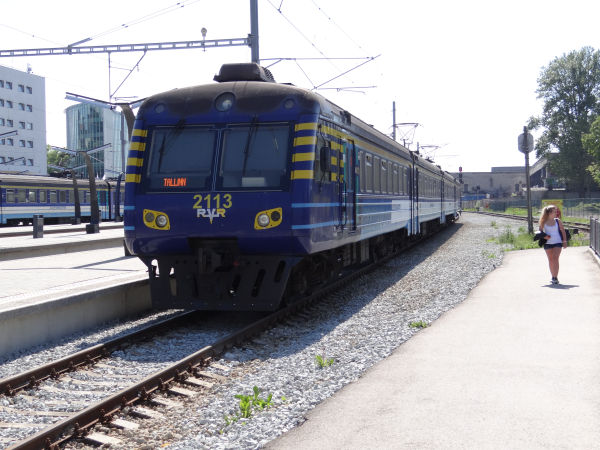
This is the best that there was before the Swiss FLIRT trains arrived. This is a Soviet era ER2 train made by RVR in Riga, Latvia
in the 1960s, but it has received a totally new front with a modern drivers cab. The drivers have now here air conditioning, but
passengers do not. It is here just arriving to Tallinn Balti jaam station from a suburban route of Tallinn. Picture at Balti jaam
9.6.2013 by Ilkka Siissalo.
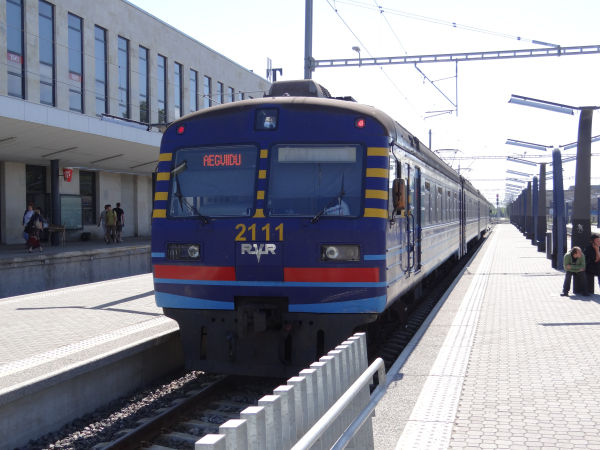
Most of the Elektriraudtee old ER2 trains looked like this one until 2013. Even this driver's cab wagon has received a rehaul and an
air conditioner just for the comfort of the drivers, but the "home made" rehaul of this one has been done a bit earlier than the one
shown above. Picture of the ER2 unit 2111 at Tallinn Balti jaam 9.6.2013 by Ilkka Siissalo.
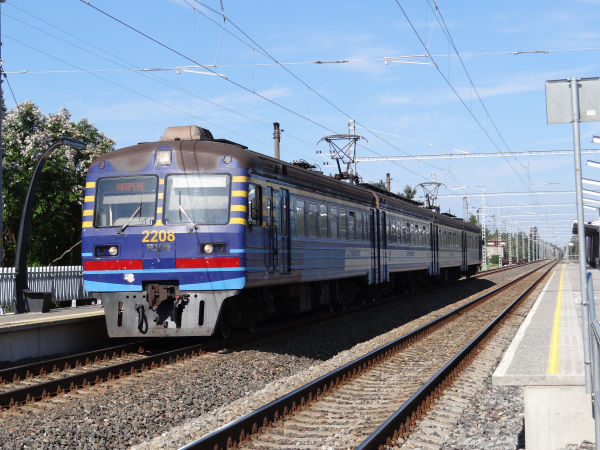
An Elektriraudtee ER2 no.2208 is stopping at Pääskülä on its route from Tallinn to Riisipere. Here it is good to note the height
difference of typical Soviet trains and the European ones: Here the platforms of Pääskülä have already been modified according to
European standards to fit the new FLIRT trains, but the old ER2 trains were still made in the old USSR times when the platforms
were really high. Picture in Pääskülä 9.6.2013 by Ilkka Siissalo.
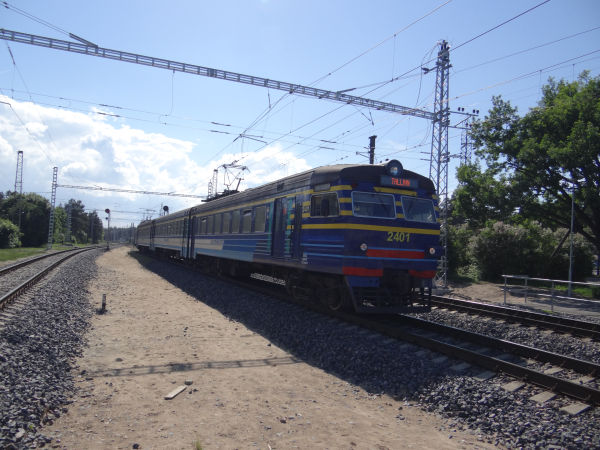
This Elektriraudtee ER2 no.2401 has not been modified or rehauled at all, it is more or less as it used to be from the 1960s, just
having received a new painting. There are no air conditioners, not even for the driver. Picture at Pääskülä station 9.6.2013 by
Ilkka Siissalo.
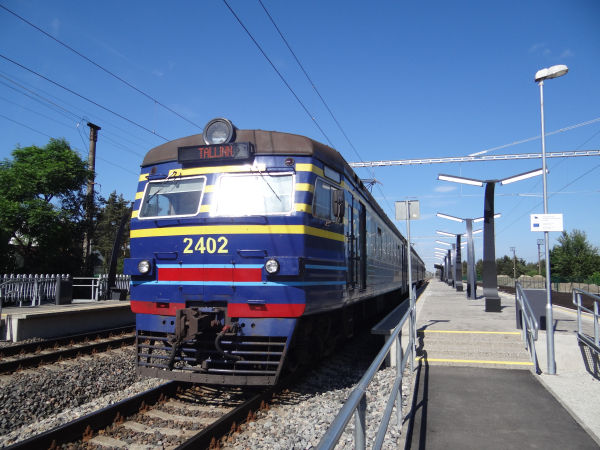
Another view of the Elektriraudtee ER2 no.2401. Here nothing has been renewed, just the display saying "Tallinn" is new. Picture at
Pääskülä station 9.6.2013 by Ilkka Siissalo. All these blue trains that you can see on this page were quickly sold back to Latvia, to the
company Holdinga Kompanija Felix Ltd, which after quick rehauls sold them on to Kazahstan. Picture of this ER 2 in Pääskülä 9.6.2013
by Ilkka Siissalo.
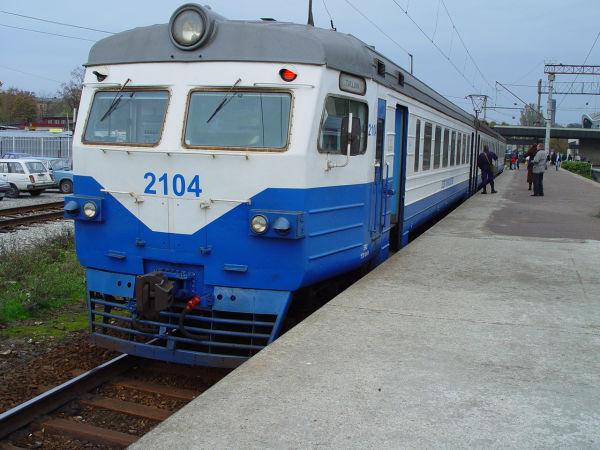
This is how the Elektriraudtee ER2 train no.2104 looked like in 2004. It had received instead of the socialist dark green a new painting
in blue and white and the texts at the sides were by then in latin text and not in Russian cyrillic, but other than that nothing had been
done since the 1960s. Picture at Tallinn Balti jaam station 16.10.2004 by Ilkka Siissalo.
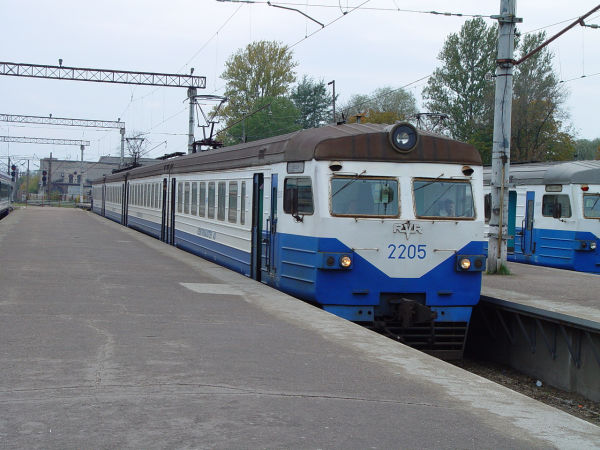
On the same day this ER2 no. 2205 is just ready to leave towards Keila on its suburban route. No modifications, renewals etc. to the old
ER2 can be seen, but the painting is new. Picture at Tallinn Balti jaam station 16.10.2004 by Ilkka Siissalo.
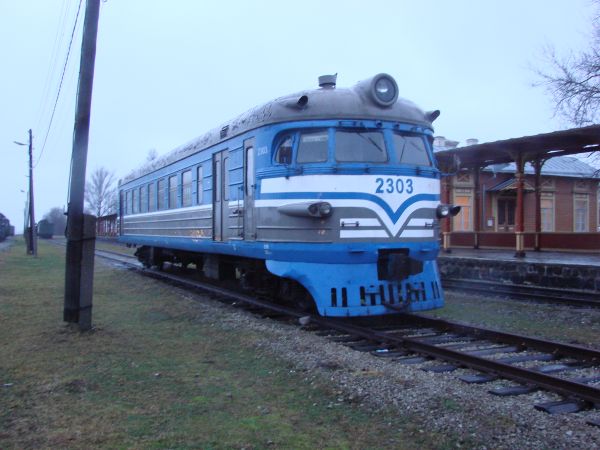
The first generation of electric trains in city of Tallinn's suburban traffic was the class ER1. Not much is left of these trains, but here is
a steering cab coach of an ER1 in pretty bad condition parked at the former Haapsalu station, where there is a small railroads museum.
This unit was built at RVR in Riga in 1958. Picture in Haapsalu 4.1.2007 by Ilkka Siissalo.

